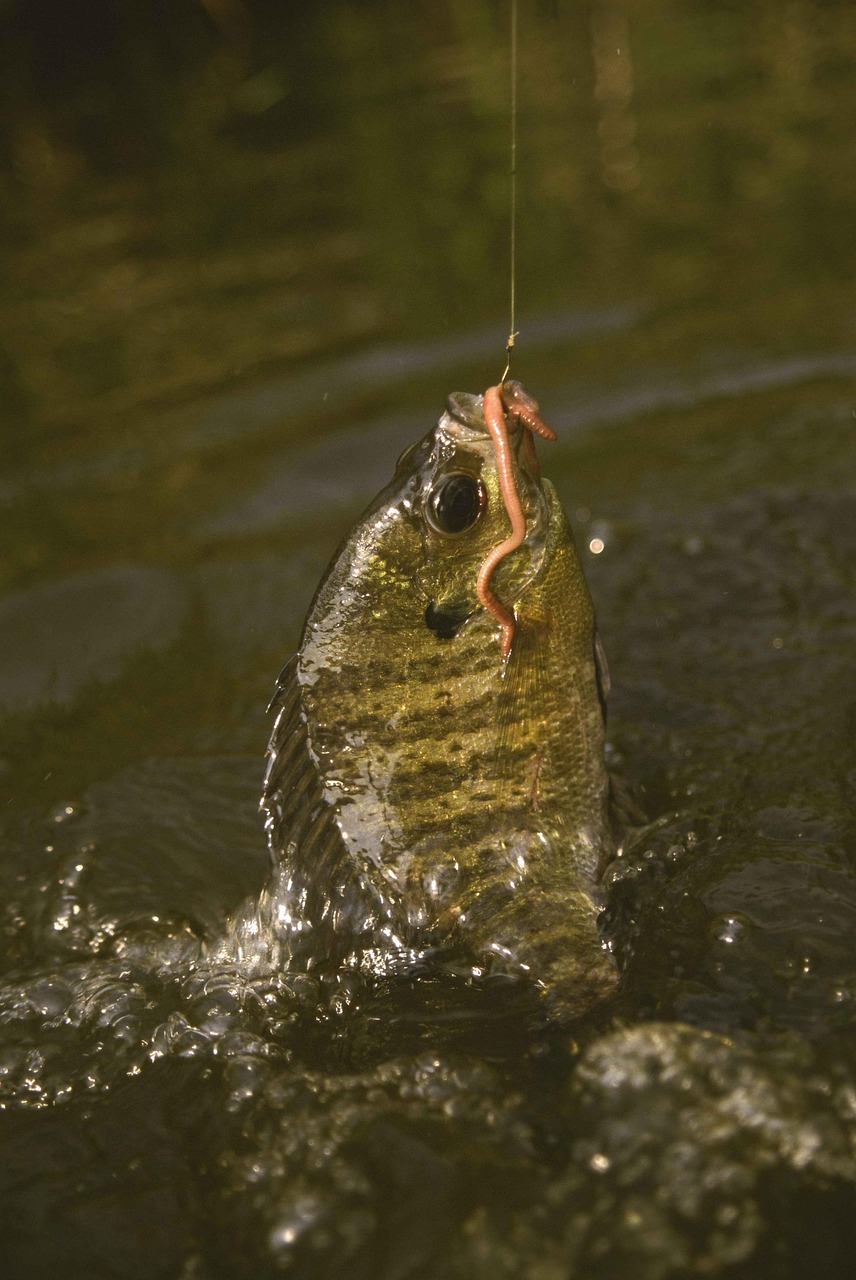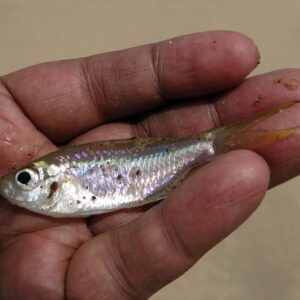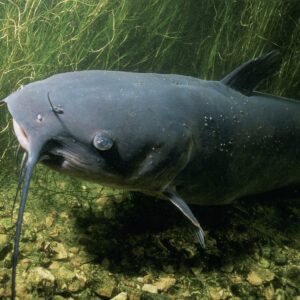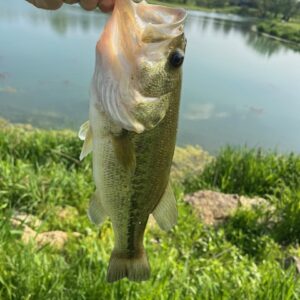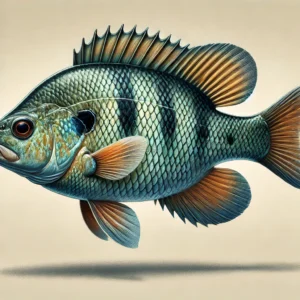The bluegill (Lepomis macrochirus) is a popular and widespread freshwater fish known for its vibrant colors and role in sport fishing. The bluegill is a versatile and widely appreciated fish species that supports recreational fishing and plays a significant role in freshwater ecosystems. Its adaptability to various environments and its role as both predator and prey make it an important component of the aquatic communities it inhabits.
Appearance
Color: Bluegills have a distinctive coloration, typically featuring a greenish to blue body with a light belly. They often have a dark spot at the base of the dorsal fin, which is a key identifying feature. Their coloration can vary slightly depending on their habitat and diet.
Size: Bluegills are generally smaller than some other sunfish species. They typically reach lengths of 6 to 10 inches (15 to 25 cm), though they can grow larger, with some reaching up to 12 inches (30 cm) or more.
Body Shape: They have a relatively flat, round body with a small mouth and a large, spiny dorsal fin. Their pectoral fins are long and pointed, and their caudal fin (tail) is slightly forked.
Habitat
Range: Bluegills are native to the central and eastern United States but have been introduced to many other regions, including parts of Canada and various countries in Europe and Asia.
Preferred Environment: They thrive in a variety of freshwater environments such as lakes, ponds, reservoirs, and slow-moving rivers. Bluegills prefer shallow waters with ample vegetation and submerged structures, which provide cover and feeding opportunities.
Behavior
Feeding: Bluegills are opportunistic feeders with a diet that primarily includes insects, small crustaceans, and other aquatic invertebrates. They may also eat small fish and plant material, depending on availability.
Activity: Bluegills are generally more active during warmer months and often form schools, especially in their younger years. They tend to be less active in colder water temperatures.
Spawning: Bluegills spawn in the spring and early summer. They create nests in shallow water by digging depressions in the substrate. The males are responsible for building and defending these nests, attracting females to lay eggs. After fertilization, the males guard the eggs and the newly hatched fry until they are free-swimming.
Angling and Conservation
Fishing: Bluegills are a popular target for anglers due to their abundance and willingness to bite on various bait and lures. They are often caught using small jigs, worms, and crickets. Their relatively small size makes them a good fish for beginner anglers.
Conservation Status: Bluegills are not considered threatened or endangered. They are widespread and generally abundant, with stable populations across their range. They are often managed through stocking programs to enhance fishing opportunities.
Ecological Role
Prey Species: As a smaller fish, bluegills serve as an important prey species for larger fish, birds, and other predators. They play a role in the food web of their aquatic ecosystems.
Impact on Ecosystems: Bluegills can influence the composition of aquatic communities, particularly in smaller ponds or lakes where they may help control insect populations and contribute to the balance of species in their habitat.

